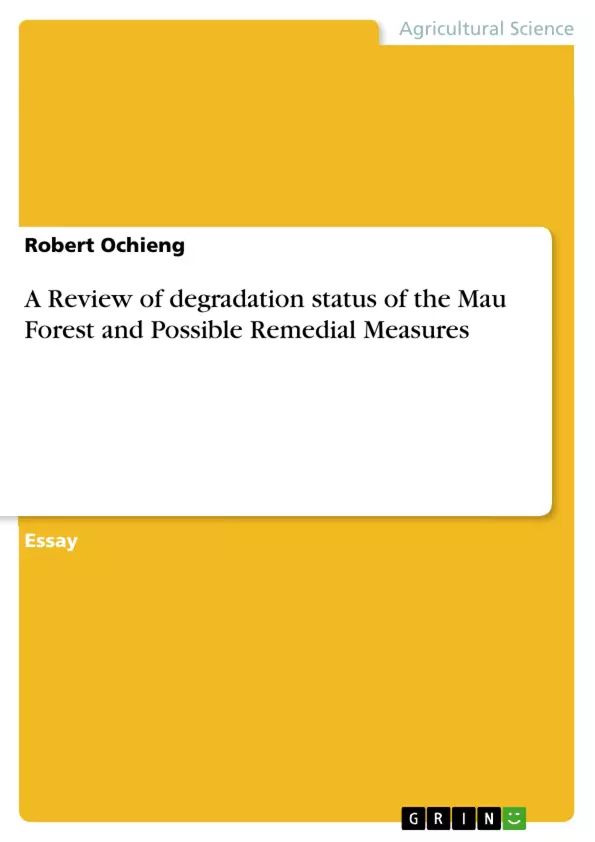Deforestation and degradation of forests continue at alarmingly high rate, particularly in the tropics. Kenya’s annual deforestation rate is estimated at 0.5%, putting at stake the survival of the timber industry and livelihood of forest dependent communities. The Mau forest is one of few remaining indigenous forests in Kenya with high deforestation rate. The forest supports the livelihood of the indigenous and surrounding communities and is major water catchment for the Eastern Africa region. This paper discusses the importance of the Mau forest and impacts of its degradation on the indigenous, national and regional communities, and proposes possible strategies to curb degradation of the forest. It is shown that degradation of the forest stems from activities of the surrounding communities, overpopulation and weaknesses in national laws and their enforcement. Several strategies are suggested; including involvement of the indigenous community in forest management, population control and the implementation of far reaching reforms in the forest and land sectors. It is recommended that since the benefits of the Mau forest are international, a debt‐for‐nature swap or similar schemes should be introduced to free national income for development and reduce the reliance on forest resources.
- Quote paper
- Robert Ochieng (Author), 2009, A Review of degradation status of the Mau Forest and Possible Remedial Measures, Munich, GRIN Verlag, https://www.hausarbeiten.de/document/156873


